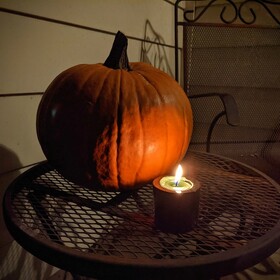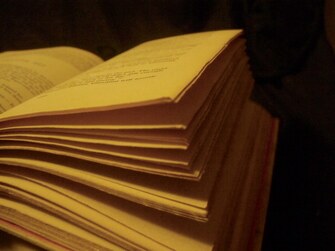 by Ellen Lewis It was that time of year. I snuggled up on my sofa with my fuzzy blanket, seasonal coffee, and warmed up pumpkin muffin. I opened a brand new horror novel, and suddenly...it was all wrong! Sure, I was eating fall foods and reading a spooky story, but I wasn’t in the right mood. It took me a minute to realize that the pumpkin muffin was making me feel warm and cozy, not ready to read about blood and monsters. As you sit down to read your favorite type of book, are you indulging in the correct food or drink—the one that will set the mood for your reading and not pull you out of it? Consider giving these suggestions a try to bring your reading experience to the next level. Embrace different genres by using food and drink to transport you to another world.
1 Comment
 by Ariana Tucker Go onto any major book-selling website and you’ll probably find a section dedicated to Black authors in the list of genres and subcategories. Amazon calls theirs “Amplify Black Voices” and lists it among other popular keywords like “Award Winners” and “Celebrity Picks.” Barnes and Noble calls theirs “Black Voices” and lists it among other browsing options such as “Large Print Books” and “Trend Shop.” Click on either link and you’ll see popular books written by Black authors, most of which are the same books we’ve been talking about for the last five years. Barnes and Noble is the worst offender of this. On their featured page of “Fiction: Black Voices,” only four were published between 2020 and 2021 (Colson Whitehead’s Harlem Shuffle is their featured book from 2021). The rest are classics by Nella Larsen, Zora Neale Hurston, and Ralph Ellison and books by authors like Chimamanda Ngozi Adichie and Sister Souljah, which were published in the 2000s and 2010s. Amazon at least offers a more up-to-date list of recently released books by month and recommendations from editors and Black icons like Billy Porter and Rick Ross. You can find almost any genre and any subject here, the only difference is that the authors are all BIPOC. by Georgia I. Salvaryn  "open book pages" by Jo Naylor CC BY 2.0 "open book pages" by Jo Naylor CC BY 2.0 It has long been debated whether audiobooks are better than traditional books and e-books, but it is an argument that has no end. While some people believe audiobooks are eventually going to take over the reading world, others believe traditional books and e-books will have a long-lasting existence and influence on the book-loving community. Eventually, one’s use of audiobooks or print media comes down to two factors: ease and enjoyment. In Dina Folgia’s opinion editorial Why the Future of Writing is in Audio, she discusses the revolutionary addition of audiobooks and storytelling podcasts to the literary world and the growing popularity of this form of “reading.” She argues that readers will eventually turn to audio for better entertainment and for convenience (i.e., a reader can listen to their favorite actor read their memoir while driving to work.) Her conclusion: by Scott MacLean  via Unsplash via Unsplash Can you name one gay superhero? I can’t. How about a wizard? Warrior? Villain? The sad fact of the matter is that I’ve read over two hundred young adult fantasy books and I know of only one that has a main character that’s gay. Now I know what you’ll say, media and literature is much more inclusive these days, which is true. According to a 2019 report done by GLAAD, the percentages of LGBTQ representation are at an all time high, and I’ll be the first to admit that it’s nice to have more options, especially in literature, but why hasn’t this translated to fantasy and other genres? I’m glad I can watch a show like Schitts Creek or read a book like The Gravity of Us by Phil Stamper, examples of quality LGBTQ stories that aren’t entirely centered on the fact that the characters are gay, but unfortunately, kids aren’t dressing up as Kurt Hummel from Glee on Halloween. They’re dressing up as Harry Potter, Daenerys Targaryen, or Harley Quinn, heroes from epic stories full of adventure. by Erin Theresa Welsh  Publishing your own book is difficult. Actually, no, that doesn’t quite sum it up. Publishing your own book is stressful, time-consuming, and insanely difficult to achieve. Even if you get published, it is very unlikely you’ll become the next J.K. Rowling or Stephen King. Most average authors don’t make more than a regular mid-level salaried office position, and that's almost never off book sales alone. If an author wants to get published, it takes a lot of hard work to achieve that finished, beautifully bound piece of work. Not only does an author need to write and complete a lengthy piece of work, but they then need to choose how to publish it. |
Archives
April 2024
Categories
All
|
|
Glassworks is a publication of Rowan University's Master of Arts in Writing 260 Victoria Street • Glassboro, New Jersey 08028 glassworksmagazine@rowan.edu |
All Content on this Site (c) 2024 Glassworks
|

 RSS Feed
RSS Feed
